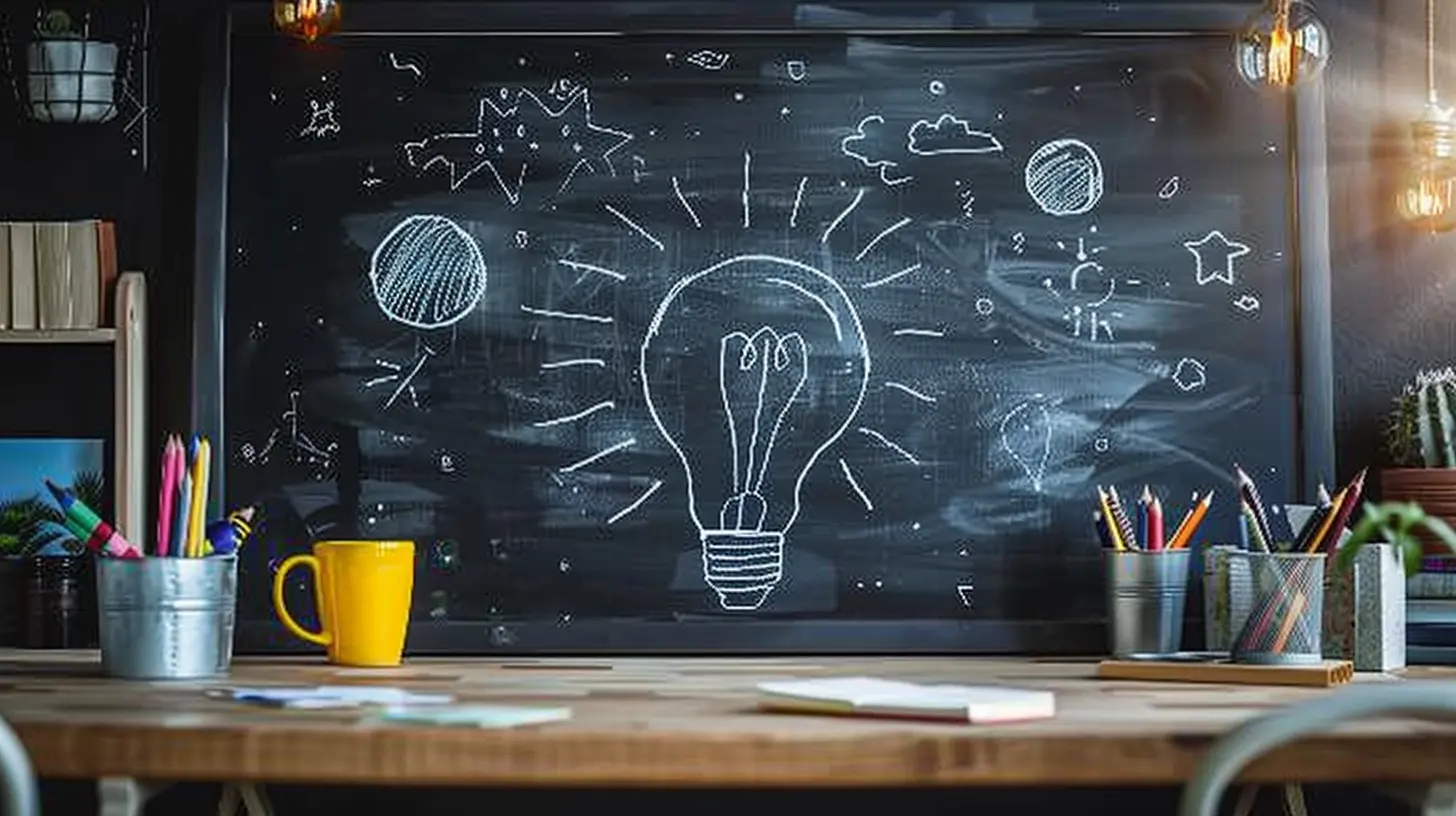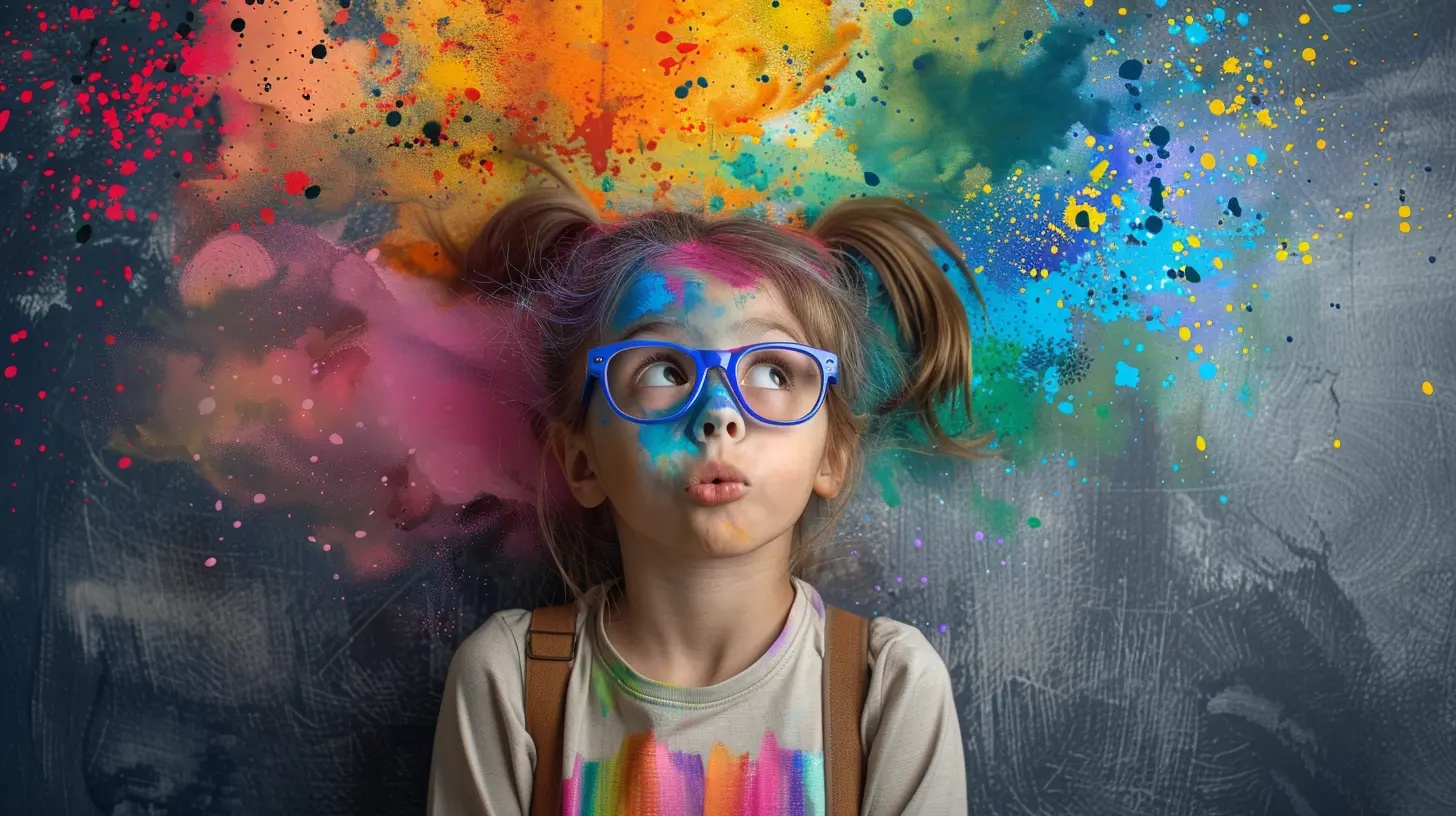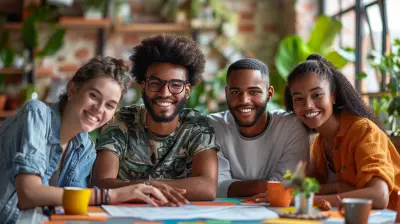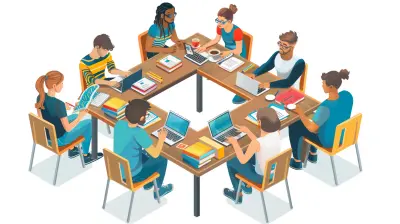Building Creative Confidence in Students
9 July 2025
Let’s face it—creativity isn’t just for artists or musicians. It’s for students, coders, scientists, and yes, even future accountants. Whether they're solving equations, writing essays, or designing robots, today’s students need creativity like plants need sunlight. But here's the kicker—many students don’t believe they’re creative at all. So, how do we change that narrative? That’s where building creative confidence steps in.
This article dives deep into how we can nurture creative confidence in students—from the classroom to the playground. Grab a coffee (or tea), and let’s unpack how to spark that creative flame in every learner.
What Is Creative Confidence, Anyway?
Before we begin handing out tips and tricks, we need to answer a fundamental question: what exactly is creative confidence?Creative confidence is the belief that you have the ability to create change and come up with new ideas. It’s not about being the best artist in class or writing an award-winning poem. It’s about trusting your instincts, taking risks, and knowing that it’s okay to fail.
Think of it like riding a bike. The first time, you might wobble or fall—maybe even cry a little—but you get back up. And eventually, you're zooming down the street, wind in your hair, no training wheels in sight. That’s what creative confidence looks like in action.
Why It Matters More Than Ever
We’re living in a world where adaptability and innovation rule the game. Between automation, tech revolutions, and rapidly shifting industries, tomorrow’s workforce will need more than just textbook smarts. They’ll need out-of-the-box thinking, grit, and the guts to try something new.Building creative confidence in students:
- Encourages risk-taking
- Fosters resilience
- Sparks curiosity
- Builds problem-solving skills
In short, it’s not just a nice-to-have—it’s an absolute must.
The Myth of “I’m Not Creative”
Here’s something we hear a lot: “But I’m just not the creative type.”Sound familiar? Maybe your students say it. Maybe you’ve said it.
But here's the truth—creativity isn’t a trait reserved for the chosen few. It's a skill. Just like math or reading, it can be taught and nurtured. Everyone has it; some just haven’t discovered how to unlock it… yet.
One big reason students think they’re not creative is because they equate creativity with artistic talent. But creativity shows up everywhere—brainstorming, strategizing, inventing, iterating. It’s wide open.
The Classroom as a Creativity Lab
Think of the classroom as a lab, not a lecture hall. A place where experiments are encouraged, failures are welcome, and weird ideas stand a chance.1. Encourage Curiosity Over Correctness
We tend to praise students for having the “right answer.” But creativity thrives in open-ended questions and ambiguous problems. Teachers can shift the focus from being correct to being curious by:- Asking "What if?" questions
- Encouraging wild ideas in brainstorming sessions
- Celebrating unique approaches over perfect answers
Curiosity is the gateway drug to creativity.
2. Make Failure Feel Safe
Failure isn’t the end—it’s feedback. But most students fear failure like it’s a monster under the bed. Building creative confidence means flipping that script.Try these classroom strategies:
- Use phrases like “Not yet” instead of “Wrong”
- Share stories of famous failures (hello, Einstein!)
- Let students revise work instead of grading once-and-done
Normalize failure, and students will feel freer to take creative risks.
3. Offer Choices
Creativity blossoms with autonomy. The more ownership students have over their learning, the more creatively they’ll engage. Instead of a one-size-fits-all assignment, offer a menu of options.For example:
- Create a video, write a song, or build a 3D model to show what you’ve learned
- Choose your own research topic
- Pick the format of your final presentation
A little choice goes a long way in building creative confidence.
Tapping Into Growth Mindset
Carol Dweck’s work on growth mindset is a game-changer here. If students believe their intelligence and creativity can be developed, they're more likely to take risks and work through challenges.We can help by:
- Praising effort, not just output
- Modeling a growth mindset ourselves (“I had no idea how to do this at first, but I kept trying…”)
- Encouraging students to reflect on what they learned from creative setbacks
With a growth mindset, creativity becomes a journey—not a destination.
Incorporating Creativity Across Subjects
Math and science seem like unlikely places for creativity to shine, but they’re actually perfect.Imagine:
- Students designing their own experiments in science
- Writing and solving their own riddles in math
- Using storytelling to explain historical events
Creativity doesn't belong to any one subject. It’s a thread that can run through every lesson, weaving learning into something meaningful and personal.
The Power of Play
Okay, let’s talk play. Too often seen as a waste of time, play is actually the birthplace of creativity. It’s how kids learn, test ideas, and express themselves freely.Inject play into learning by:
- Starting class with a creative warm-up (improv games, doodle prompts)
- Using role-play to explore different perspectives
- Turning lessons into storytelling adventures
When students play, their brains light up. It’s creativity in its purest, most joyful form.
Bringing Tech Into the Mix
Technology, when used thoughtfully, can be a powerful tool for building creative confidence.Consider:
- Digital storytelling platforms (like Book Creator or Storybird)
- Coding projects that let students program their own games
- Collaborative tools like Padlet or Google Jamboard for brainstorming
The key? Let students be creators, not just consumers.
Building a Creative Culture
Creating lasting change means building a culture where creativity is part of the air students breathe.Here’s how schools can do that:
1. Celebrate Creative Process, Not Just Products
Showcase process boards, brainstorms, and drafts—not just polished projects. Hang them in hallways. Talk about them in class. Make creativity visible.2. Provide Time and Space to Create
Crammed schedules don’t leave much room for imaginative thinking. Embedding time for creative exploration—whether it’s makerspace time, passion projects, or genius hour—tells students their ideas matter.3. Train Teachers to Nurture Creativity
Teachers are the gatekeepers of classroom culture. Investing in professional development around creativity opens doors for everyone.A Word to Parents and Guardians
Building creative confidence doesn’t stop at the school gates. At home, parents play a huge role too.Simple ways to encourage creativity at home:
- Ask open-ended questions at dinner (“What would you invent if you had no limits?”)
- Keep art supplies and building materials easily accessible
- Support weird, whimsical, or wacky ideas
- Encourage storytelling and imagination games
Remember, creativity starts with permission—to imagine, to fail, and to try again.
Redefining What Success Looks Like
Here’s the truth: creative confidence shifts how students define success. It’s no longer only about grades or test scores—it’s about growth, grit, and bold ideas. Building this confidence sets students up not just for academic success, but for a lifetime of innovation and impact.When students believe their ideas matter, they show up differently. They speak up. They dive deeper. They dream bigger.
Final Thoughts
Building creative confidence in students isn’t a luxury—it’s a necessity. In a world that’s changing by the second, creativity is the currency of the future. The good news? Every student already has the seed of creativity within them. Our job—whether we’re teachers, parents, or mentors—is to water it.So let’s start today. Let’s build classrooms that hum with curiosity, play, and possibility. Let’s teach kids that their ideas are powerful, their voices are valuable, and their creativity is limitless.
Because when students believe in their ability to create—anything is possible.
all images in this post were generated using AI tools
Category:
Creativity In EducationAuthor:

Fiona McFarlin
Discussion
rate this article
1 comments
Christopher Jennings
Empowering students fosters innovation and resilience.
July 18, 2025 at 2:25 AM

Fiona McFarlin
Thank you for your insight! Empowering students is indeed key to nurturing their creativity and resilience.


